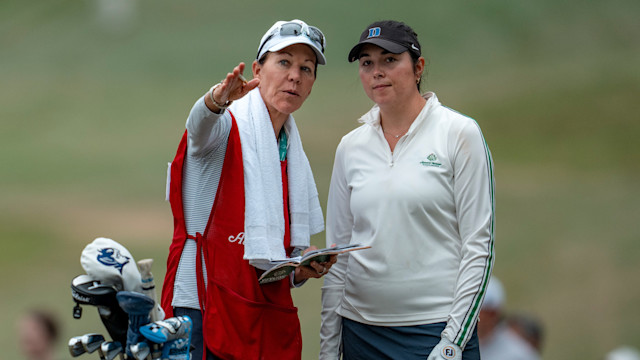quick coaching
5 Keys to Follow Lottie Woad's Success at ANWA & Augusta National
By Brendon Elliott, PGA
Published on

There's something magical about watching a player who can work the golf ball both ways on command. As Lottie Woad demonstrated during her historic Augusta National Women's Amateur victory last year and continues to show being in contention this year, the ability to shape shots is a game-changer on challenging courses.
The 21-year-old Florida State standout from Farnham, England, has proven her versatility by conquering both Champions Retreat and Augusta National's demanding layouts. Her impressive closing birdies on 15, 17, and 18 to claim last year's title showcased not just nerves of steel but a shot-making arsenal that allows her to attack pins from any angle.
"When you can work the ball both ways, you're never out of position," is a sentiment echoed by many elite players. This skill becomes particularly valuable on courses like Augusta National, where approach angles can mean the difference between a birdie putt and a treacherous recovery.
Let me share four key tips and a practice drill to help you develop this essential skill in your own game.
Tip 1: Understand the Fundamentals of Ball Flight
Before attempting to shape shots, you need to understand what makes the ball curve. For a right-handed golfer, a draw moves from right to left, while a fade moves from left to right. The primary factor is the relationship between your clubface and swing path at impact.

For a draw, the clubface must be open relative to the target but closed relative to the swing path (with an in-to-out swing direction). For a fade, it's the opposite – the face should be closed relative to the target but open relative to the swing path (with an out-to-in swing direction). The ball starts primarily in the direction the clubface points at impact and curves away from the path. Only by creating this foundational understanding of what is needed to shape the golf ball can you then begin working on it.
Tip 2: Adjust Your Setup for the Desired Shape
Woad's ability to work the ball starts with subtle setup adjustments. For a draw, position the ball slightly back in your stance but still forward of center. Close your stance by pulling your lead foot back slightly, and strengthen your grip by rotating both hands clockwise on the club.

For a fade, do the opposite: play the ball slightly forward, open your stance by dropping your trail foot back, and weaken your grip by rotating both hands counterclockwise. These adjustments naturally promote the swing path and face conditions needed for each shot shape.
Tip 3: Visualize the Shot Shape
The mental aspect of shot shaping cannot be overstated. Before each shot, Woad likely visualizes the exact curve she wants to produce. Stand behind the ball, pick a specific starting line, and imagine the ball's entire flight path, including where it will land and how it will roll.

This visualization primes your body to make the subtle adjustments needed to create that shot. Your brain is remarkably good at figuring out how to achieve what you clearly visualize.
Tip 4: Maintain Your Tempo
One common mistake when attempting to shape shots is changing your tempo. Whether hitting a draw or fade, maintain the same rhythm and tempo as your standard shot. The shape comes from setup and minor swing adjustments, not from swinging harder or softer.

Woad's smooth, consistent tempo throughout her swing is a key reason she can reliably work the ball in pressure situations, like she'll experience on the second nine today at Augusta National.
Practice Shapes Using The Gate Drill
Set up two alignment sticks or clubs on the ground about 5-7 yards in front of you, creating a "gate" about 3 feet wide. Position this gate slightly right of your intended final target as you work on a draw and slightly left for working on a fade.
The challenge is to start your ball through the gate and then curve it toward the target. Begin with slight curves and gradually work toward more pronounced shapes as you gain confidence.
Practice this drill regularly, and you'll develop the feel and confidence to shape shots on demand – a skill that might help you navigate challenging courses like Lottie Woad has at the Augusta National Women's Amateur.

Remember, shot shaping isn't just for elite players. With dedicated practice and these fundamentals, you can add this valuable dimension to your game and unlock new scoring opportunities on any course you play.
PGA of America Golf Professional Brendon Elliott is an award-winning coach and golf writer. You can check out his writing work and learn more about him by visiting BEAGOLFER.golf and OneMoreRollGolf.com.



